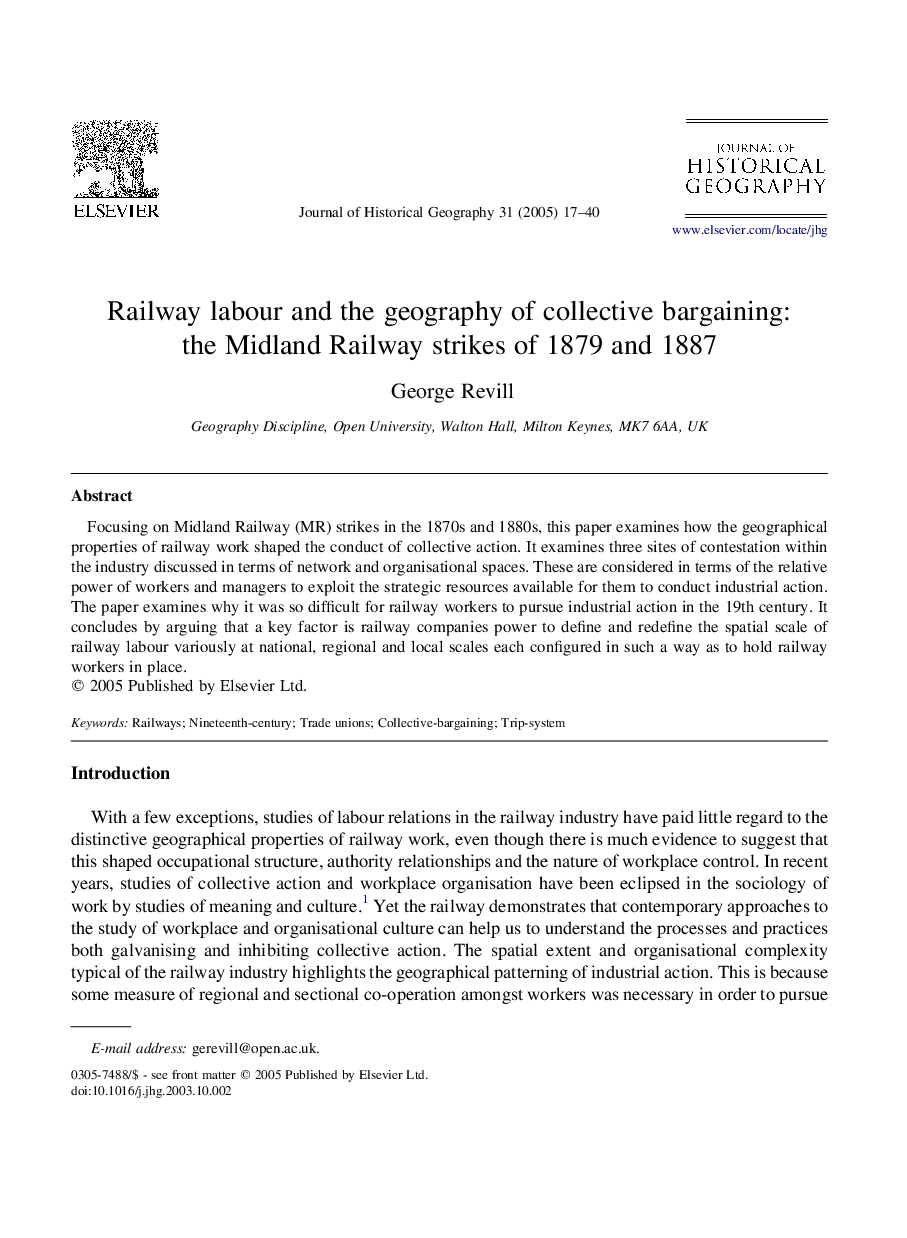| Article ID | Journal | Published Year | Pages | File Type |
|---|---|---|---|---|
| 10500496 | Journal of Historical Geography | 2005 | 24 Pages |
Abstract
Focusing on Midland Railway (MR) strikes in the 1870s and 1880s, this paper examines how the geographical properties of railway work shaped the conduct of collective action. It examines three sites of contestation within the industry discussed in terms of network and organisational spaces. These are considered in terms of the relative power of workers and managers to exploit the strategic resources available for them to conduct industrial action. The paper examines why it was so difficult for railway workers to pursue industrial action in the 19th century. It concludes by arguing that a key factor is railway companies power to define and redefine the spatial scale of railway labour variously at national, regional and local scales each configured in such a way as to hold railway workers in place.
Keywords
Related Topics
Social Sciences and Humanities
Arts and Humanities
History
Authors
George Revill,
